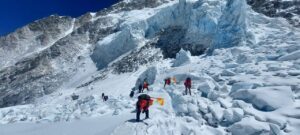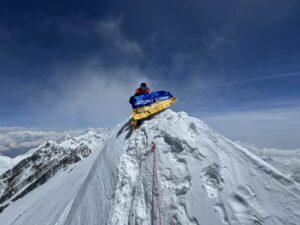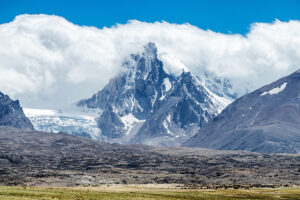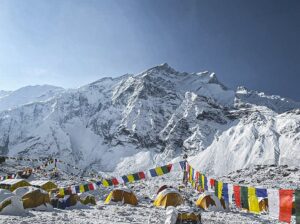The fall expedition season is about to start in Nepal, but so far, our opportunity for vicarious thrills is modest. The season kicks off with early starts to 8,000’ers Manaslu and Dhaulagiri, followed later by Ama Dablam and Himlung.
All these are commercial expeditions. So far, no alpine-style climbs or new route attempts have blipped on the radar. But two lesser dramas offer mild intrigue: One, the first commercial attempt to the true summit of Manaslu. And two, a reprise for those Dhaulagiri climbers defeated by bad weather and COVID last spring.
Manaslu and Ama Dablam
A significant number of outfitters — mainly Nepal-based but also some international companies like Climbing the Seven Summits — are offering trips to Manaslu. This includes Lakpa Sherpa‘s new startup, 8K.
Mingma G and his Imagine Nepal team have admitted the inconvenient truth that most summiters have not actually reached the true top of Manaslu. Mingma G will try to do better. The question is, how his guides and clients will manage that final knife-edge ridge. For more information on the summit controversy, check the updated report on 8000ers.com.
The use of bottled oxygen on Manaslu has grown from infrequent to the new normal. Still, some climbers insist that they will not use it, including Pako Crestas, Anto Illimani, and Jose Maria Ponce of Spain, as Carlos Garranzo told ExplorersWeb.
The highest number of permits this season may go to comparatively low but lovely Ama Dablam (6,812m). Seven Summit Treks, for instance, will guide the 8,000’ers in September until mid-October, and lesser peaks like Ama Dablam afterward. This takes advantage of the typically cold but clear late-autumn days.
Himlung’s appeal
Himlung (7,126m) also qualifies as a beautiful and straightforward 7,000’er. It is good preparation for newbies at altitude who dream of stepping up to the 8,000’ers. The action also resumes on trekking peaks like Lobuche and Island Peak. And Madison Mountaineering offers the option of a guided expedition to an unclimbed 6,000’er.
Seven Summit Treks has not yet published its lists of Dhaulagiri participants, but we can expect some familiar faces from last spring’s unsuccessful attempt. Some are hurrying to complete a first national ascent; others, their 14×8,000’er tick list. We’ll update as we hear.
Those hoping to see Peter Hamor, Horia Colibasanu, and Marius Gane back on Dhaulagiri’s Northwest Ridge will have to wait. Colibasanu told ExplorersWeb that he won’t be returning to the mountain any time soon.
On the other hand, Topo Mena and Carla Perez are currently training on Ecuador’s Cayambe — a 5,590m volcano in their backyard — before heading for the Himalaya. They are currently keeping quiet about their goal.

Carla Perez has spent weeks working with a women’s climbing project at home in the Ecuadorian Andes and acclimatizing for the Himalaya in the process. Photo: Carla Perez
Smaller teams unwanted?
Helias Millerioux, fresh from climbing Diram Peak and Rakaposhi in Pakistan, admitted that he is through climbing in Nepal, because of red tape and soaring prices. Other climbers have mentioned that they are finding it difficult to organize expeditions in Nepal because the 8000’ers so dominate the business that porters, BC crews, and even permits are increasingly hard to come by.
Horia Colibasanu had a more tempered answer: “It is more expensive to go as a small team than to go with 50 people. But it’s still not crazy expensive, and for sure it’s cheaper than Everest.”
Alternate destinations
RussianClimb reports that Vadim Fedorov is currently heading for Koyo Zom, the “highest peak in the Hindu Raj”. The site notes that September is the best time to climb in Pakistan’s Hindu Kush and Hindu Raj.

The imposing Koyo Zom. Photo: RussianClimb






